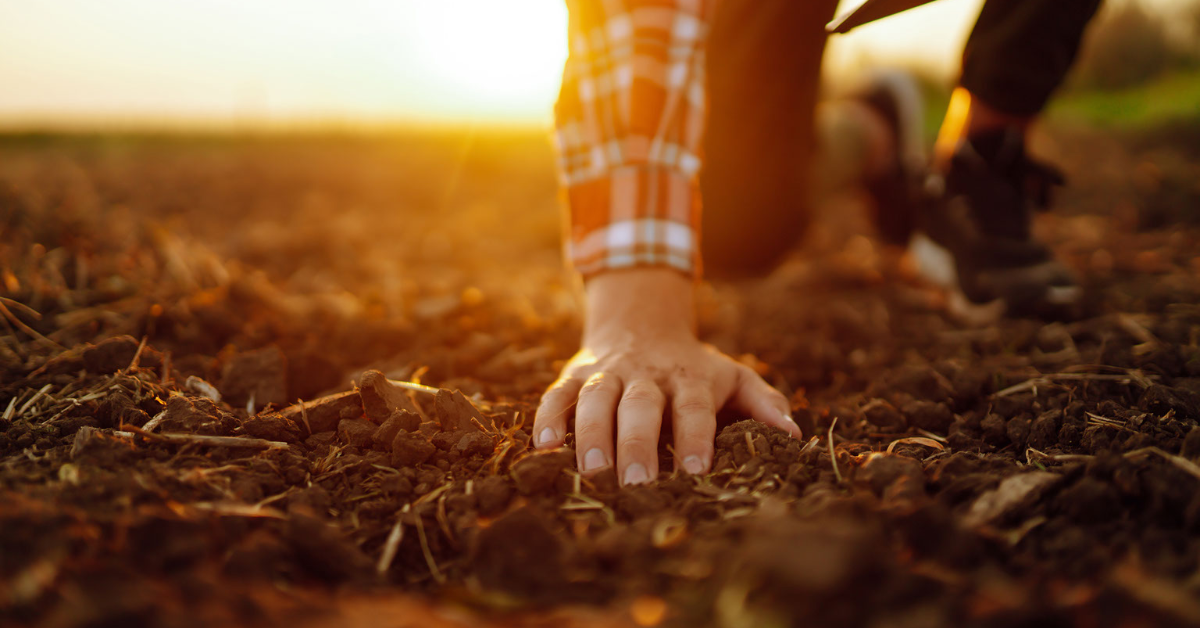The foundation of Midwest Laboratories is the science of soil testing. After all, that is how it began for founder Ken Pohlman in 1975. In 2022 with the capacity to run analysis on upwards of 30,000 soil samples a day, Midwest Laboratories has established themselves as a leader in the third-party laboratory space.
Soil Health has been a topic of discussion for many decades but in this article, we will explore what we mean when we talk about soil health, what tools are available to help improve our soils and where the future of soil health is headed.
I reached out to our friends at the Natural Resources Conservation office to find out more about Soil Health. I had the opportunity to sit down with State Soil Health Specialist, Aaron Hird and Carlos Villarrea, a State Soil Scientist.
If you are interested in the accompanying video series to this blog visit our channel on Acres TV.
First a Look at the Soil
We have discovered that soil isn’t an inert medium for growing – it is a living and life-giving natural resource. It is full of billions of bacteria, fungi, and other microbes that are the foundation of a complex symbiotic ecosystem. Aaron started off by helping to define what soil health is. “Soil health is defined as the continued capacity of soil to function as a vital living ecosystem that sustains plants, animals, and humans. Healthy soil gives us clean air and water, bountiful crops and forests, productive grazing lands, diverse wildlife, and beautiful landscapes,” he said.
“So how do we build healthy soils?” I asked.
“We first need to note the five essential functions of soil,” Aaron began.
“Soil regulates water, sustains plants and animals, filters potential pollutants, cycles nutrients, and provides structure and support.” He continued to further explain that soil regulates water by helping control where rain, snowmelt, and irrigation water goes. Water will flow over the land or into and through the soil.

The diversity and productivity of living things depends on soil. Healthy soils tend to have a healthy mix of plants and animals. The minerals and microbes that may be present in a particular soil are responsible for filtering, buffering, degrading, immobilizing, and detoxifying organic and inorganic materials, including industrial and municipal by-products and atmospheric deposits.
Nutrients are cycled in the soil all the time. Granted, temperature, moisture and presence of microbial activity will largely influence the rate of return for nutrients. Carbon, nitrogen, phosphorus, and many other nutrients are stored, transformed, and cycled in the soil for example. Another important factor in creating healthy soils in creating soil structure. Soil structure provides a medium for plant roots. Soils also provide support for human structures and protection for archeological treasures.
Where Nutrient Management Enters the Conversation
“What are some management decisions that can be made to encourage the soil health process?” I asked.
“Soil health research has determined how to manage soil in a way that improves soil function.” He began as he presented three types of soil monoliths. One monolith depicted 40+ years of no-till and the effects of that practice with a noticeable difference in soil structure and color in comparison to the others. The second monolith went through a conversion 11 years ago to no-till and cover crop use. The final set of monoliths depicts chronic tillage and the effects of running heavy equipment across the plot every year. “We have good on the one end,” referring to the 40 plus year no-till and cover crop plot, “Bad on the other end,” in reference to the continuous plow plot, “and on the way in the middle.” Hird said.

On the continuous tillage plot, Hird noted the crust layer that had formed prior to the construction of the monolith model causing many different problems to arise. “This prevents water infiltration, crop emergence, etc. Just underneath there is a compaction layer that has resulted from field cultivation and equipment traffic. And you can see how it has become platy and created a hard brick-like structure that can prevent a lot of root movement and a lot of water movement, and just below there is a 4”-8” consolidated layer that shows the mixing of soil every year from the dicing that goes on and some scalloping from the disc blades and that’s where a majority of the compaction is because there is the weight of the tractor and about 250 psi on each disc blade as it moves across the soil and pushes down causing torque.” Hird went on to note that is can also occur in a garden setting with the repeated use of a garden tiller.
Adjusting Your Management Practices for Size
“You have alluded to different management practices for large scale farmers as well as the backyard farmer. How does Soil Health fit into that picture. Can you elaborate on that?” I asked.
“Absolutely.” Hird said. “When we implement these soil health practices, we begin to see these highlights of soil productivity and seeing what the soil can do and function. We may not be currently tilling but someone has in the past and understanding and finding those compaction layers is important because then we can develop a plan to correct those issues through no-till and cover cropping as well as other soil health techniques that promote good soil structure.” He went on to mention, “And over time we will begin to see the benefits of these techniques through great water infiltration, greater root mass of the intended crop and other benefits associated with healthy soils with good structure.”

Referencing back to the soil monoliths that were displayed across the NRC conference room table. Arron highlighted the soil structure features that were present in the newly converted plot of eleven years no-till and cover cropping saying, “The no-till practice is a benefit in itself and over time we see those benefits from a no-till system add up through productivity of the soil, the ability for rainfall to soak in, healthy and productive crops and cover crops.” “No-till planting allows for the structure that was created last year to remain and hopefully build upon for this year.” Hird said. “All of that will continue year after year with the roots of crops and cover crops being able to penetrate the compacted layers and break them up creating more structure to the soil allowing the soil to function and allow for the cycling of nutrients, air and water.”
__________________________
Stay tuned for the continuation of this conversation between Ashley, Aaron, and Carolos in part two of our blog. Come back this Wednesday, November 16th as we delve into a variety of helpful soil management practices and the significant importance that third party analysis in your soil health.Have questions about soil testing and your operation? Send an email to our designated Field Representatives at fieldreps@midwestlabs.com.